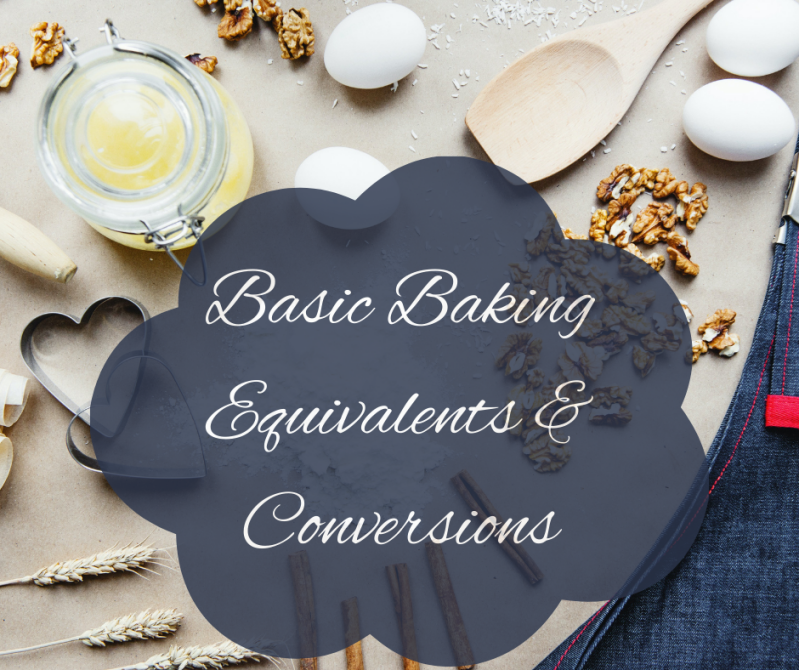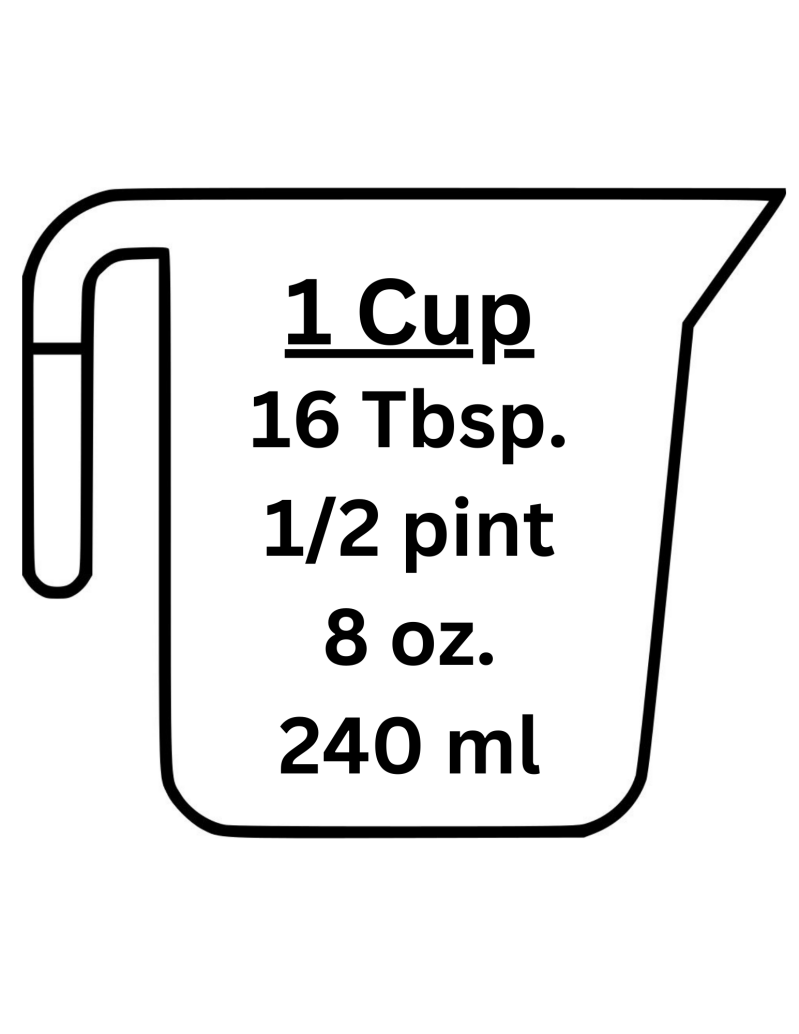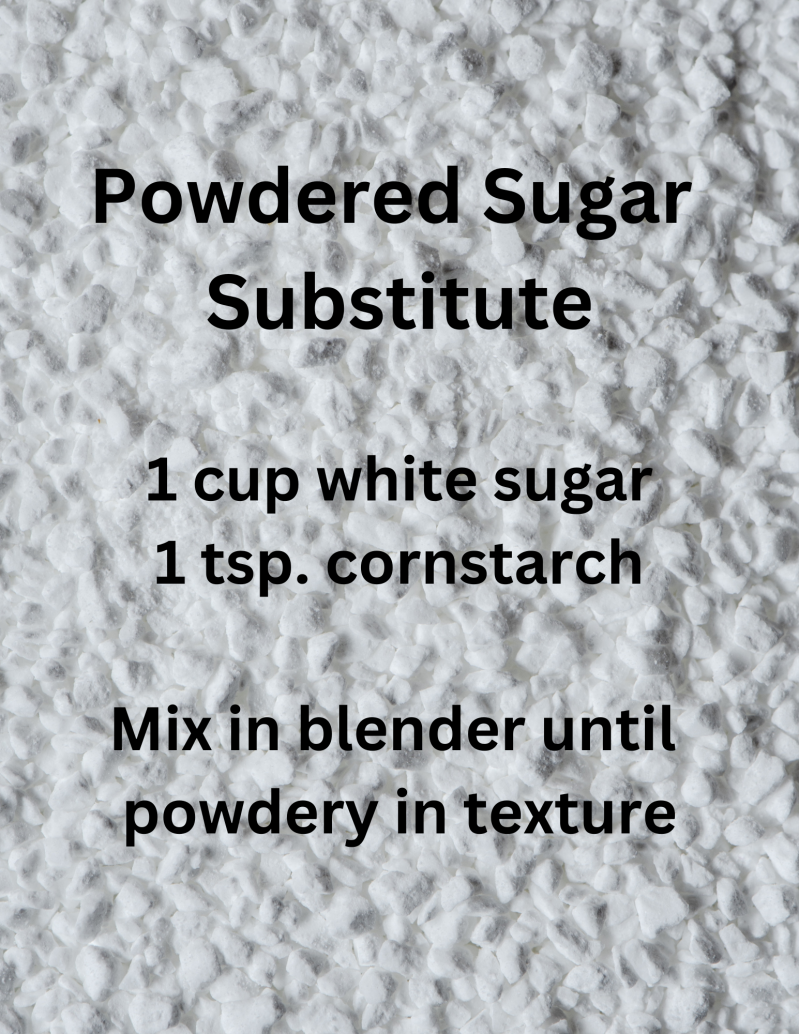We've all been there, you find the "perfect" recipe, but when you begin to make it, you realize that either there is a measurement you aren't sure of, or an ingredient you forgot to pick up! The recipe could be in a different measurement form, and if you are like me I have long forgotten how to convert metric to standard, and vice-versa. In this blog, I hope to help make it easy to measure correctly, to learn the equivalent to various measurements, and to convert temperatures. I will also share with you a few recipes to substitute for possible missing ingredients so you can continue on your way with that "perfect" recipe! In closing I will also include a glossary of terms used in vintage recipes!
There are a few sections I would like to break this information down into.
- Measuring Correctly
- Measurement Equivalents
- Temperature Conversions
- Ingredient Substitutions
- Glossary of Vintage Recipe Terminology
Measuring Correctly:
When measuring ingredients for your chosen recipe, there are a few tips to get an accurate measurement. Most baking recipes need to be followed exactly, baking is more of a science of reactivity between the ingredients to get the desired result. Fudging on the measurements, most of the time, will lead to a baking failure.
Liquid measuring cups use fluid ounces, while dry measuring cups use a volume measurement. Recipes are developed using the measuring tool designed for each ingredient. If a successful result is desired, then the recipe must be followed using the measuring tool designed for each ingredient.
For liquid ingredients, always use a liquid measuring cup. Liquid measurements are based on the liquid volume and are different than the dry measuring cups.
You will notice the lines on the side of the measuring cup, these will offer exact measurements, typically in all forms of measurement. The lines will include, cups, fluid ounces, pints, quarts, and ml. Some measuring cups will also include the tablespoon measurements.
When measuring into a liquid measuring cup, it is designed to be placed on a flat surface and poured into. If you hold the cup and pour into it, and look at the measurement line, often the cup is held at a slight angle and it can throw the measurement off. Instead, leave it on the counter and watch the measurement line as you pour. This allows the liquid to be level, and gives a much more accurate measurement of your liquid ingredients.
When measuring dry ingredients, always use the dry measuring cups. These typically have a level top, and a side handle.
Most people, when measuring dry ingredients will scoop the measuring cup down into the dry ingredient and then shake to level off. This does not always lead to an accurate measurement. Rather, it will pack the ingredient into the cup and result in more than needed.
The best way to measure a dry ingredient, especially flour, is to scoop the ingredient into the cup and slightly over fill. Then, with the back of a knife, or other flat utensil, run it across the top of the cup to level off the ingredient. This allows a more accurate measurement.
When it comes to measuring spoons, there is little difference of measurement with these smaller amounts.
A good set of measuring spoons will have both Standard and Metric units on the handle to identify the size of the spoon. These will typically be abbreviated.
The most common abbreviations are:
t = teaspoon
tsp = teaspoon
T = tablespoon
Tbsp = tablespoon
mL = milliliter
Measurement Equivalents:
Most of the conversions I have included here, have both liquid and dry measurements. Remember to use the correct equivalent to the type of ingredient you are measuring!
One important thing to note: the oz. or ounce measurement on these conversions refers to the liquid ounce, not the weight ounce.
There are times, when I get every thing out to start a recipe, and I realize that I can not find one of my measuring cups. Having the measurement equivalent for the cup missing can be a life safer when in the heat of baking!
There are some recipes that might call for a "dash" or a "pinch" of a recipe. This reference can throw many cooks off if they are not familiar with the term. Below is a graphic that has the basic equivalent for those measurements.
One measurement I have to admit, I had the most difficult time learning as a new baker years ago, was with butter. I know, it is printed all over the wrapper, yet I still had a difficult time remembering and I was always second guessing myself!
Typically butter is sold by the pound, and is divided into four sticks within the packaging. I could not begin to guess how many recipes I fouled up because I used one stick when the recipe called for one cup!
So, I thought I would include the butter equivalents as well. Both Standard and Metric are included on this one since I run into those in older recipes quite often.
Temperature Conversions:
Although most recipes here in the United States include the temperatures listed in both Fahrenheit and Celsius (sometimes called Centigrade), there are many that do not.
For the majority of us who have forgotten the math equation for converting, seeing a recipe with only Celsius can be quite confusing! I don't find many recipes that don't include Fahrenheit, however I do have a few foreign recipes that only use the Celsius measurement.
I thought it might be helpful to include a graphic that shows the conversion for some of the most common temperatures used in baking.
Ingredient Substitutions:
There isn't anything much more disappointing than realizing you don't quite have enough self-rising flour for those biscuits, or your baking powder can is empty. Something I have ran into is after I spent so much time baking a cake, I found that the powdered sugar needed for the final dusting was not in the pantry!
These are some of my go-to ingredient substitutions for when I need a little more than what I have.
The only one of these I have considered doing all the time is the brown sugar substitute. The molasses adds a deeper flavor than the store bought brown sugar. The darkness of the sugar can easily be adjusted by adding more or less molasses.
I hope this information was helpful to you! I know I still pull out my references of equivalents and conversions every now and then, especially when working with an older recipe.
As I tend to use older or "vintage" recipes, I find several terms used that are not used in modern recipes. So, in closing, I would like to share a short glossary of vintage recipe terminology!
Glossary of Vintage Recipe Terminology:
- Aspic: A clear gelatin made from vegetable or meat broth, or from processed gelatin
- Bind: To add egg, thick sauce or another ingredient to a mixture to help it hold together
- Blanch: To scald quickly in boiling water
- Bombe: A frozen dessert with two or more flavors layered in a fancy mold — also the name of the mold itself
- Comfits: Candy-coated nuts, seeds, fruits or spices (Jordan almonds would be considered large comfits)
- Compote: A mixture of sweetened cooked fruits
- Forcemeat: A mixture of ground raw or cooked meat/poultry/fish, combined with vegetables, bread crumbs, and spices or seasonings
- Frizzle: To fry bacon or another thinly-sliced meat until the edges ruffle
- Gill: Generally considered to be 5 liquid ounces, or a quarter of a British pint (which is 20 ounces vs the US 16 ounces), or half an Imperial cup measure… however, depending on when the recipe was written, it could mean a quarter of an American pint, which would make it 4 liquid ounces, or half a cup
- Glace: Means something is candied, such as glace cherries and other candied fruits
- Macedoine: A mixture of vegetables or fruits, cut into small pieces
- Macerate: To let something steep in wine or spirits
- Marzipan: A sugary almond paste, also called almond candy dough, used to make decorative edible shapes
- Oleo: Margarine — a butter substitute (also called oleomargarine back in the 40s/50s)
- Paraffin: A white wax — specifically petroleum wax, used in canning and preserving
- Plump: To soak raisins or other dried fruits in liquid until they are rehydrated and plump up
- Poach: To cook in simmering liquid
- Ragout: A stew, usually with meat and vegetables
- Ramekin: A small individual-size baking dish
- Saleratus: A leavening agent — potassium bicarbonate or sodium bicarbonate, aka baking soda.
- Stud: To stick cloves, pieces of garlic, or another seasoning into the surface of a food to be cooked
- Timbale: A savory custard made with meat, fish, poultry or vegetables
- Top of the bottle: The rich cream that rises to the top of a glass bottle of whole milk
- Truss: To tie poultry (such as a Thanksgiving turkey) into a compact shape before roasting




















Add comment
Comments